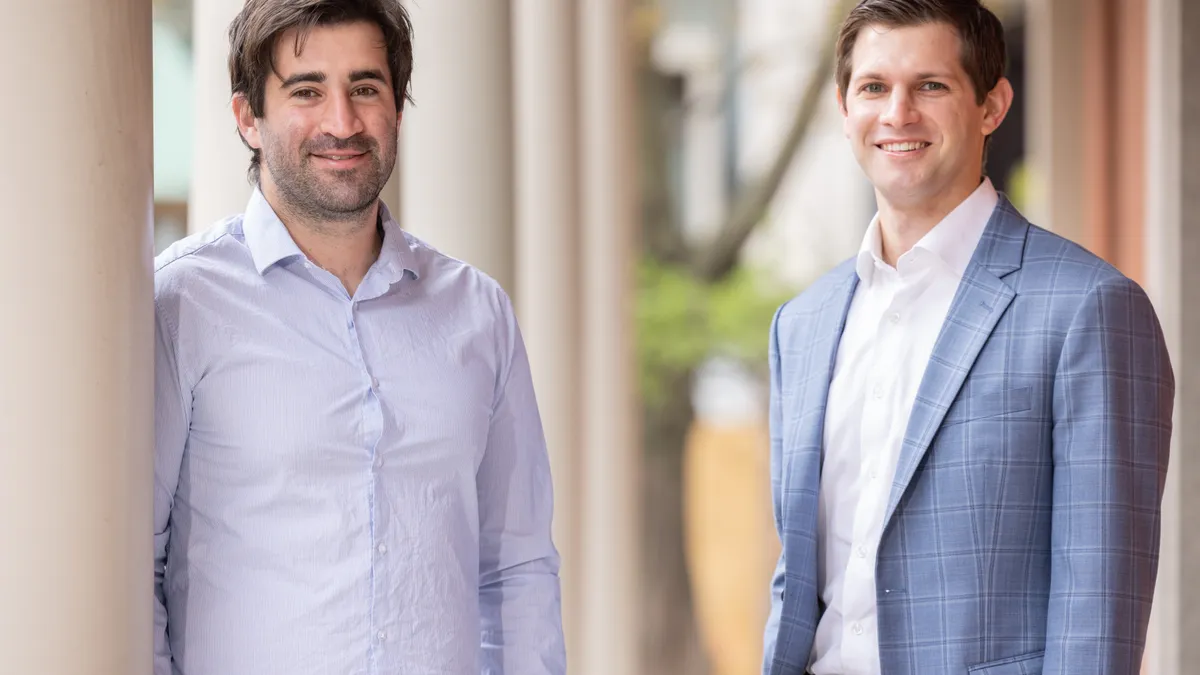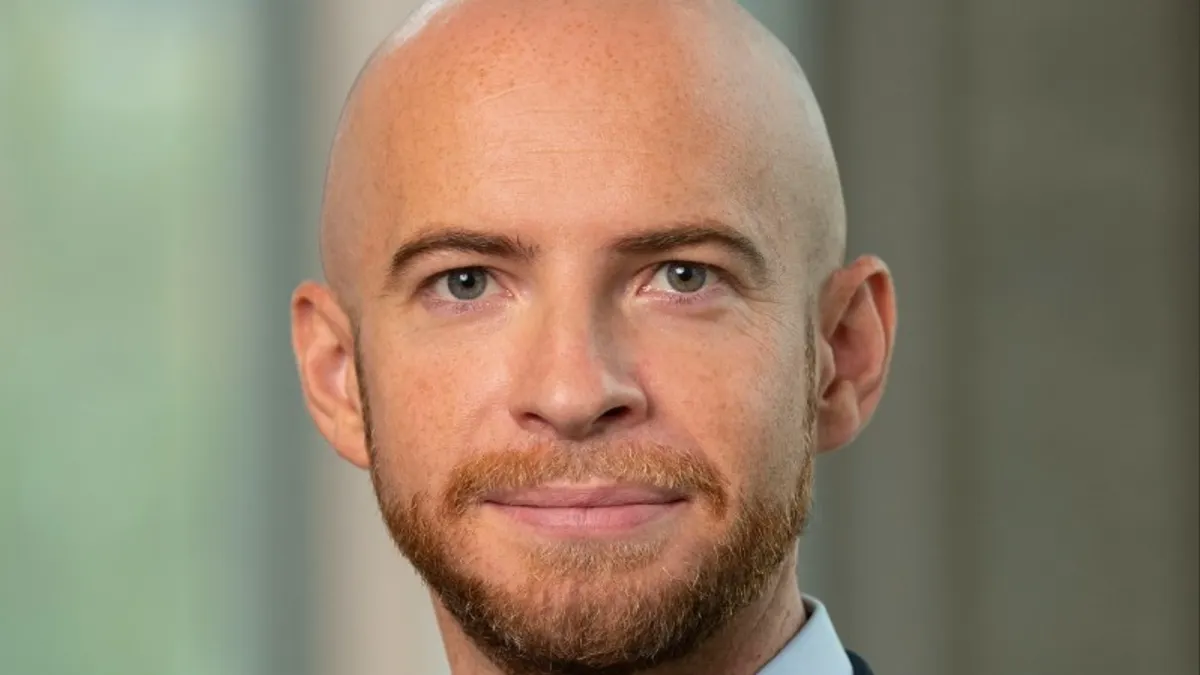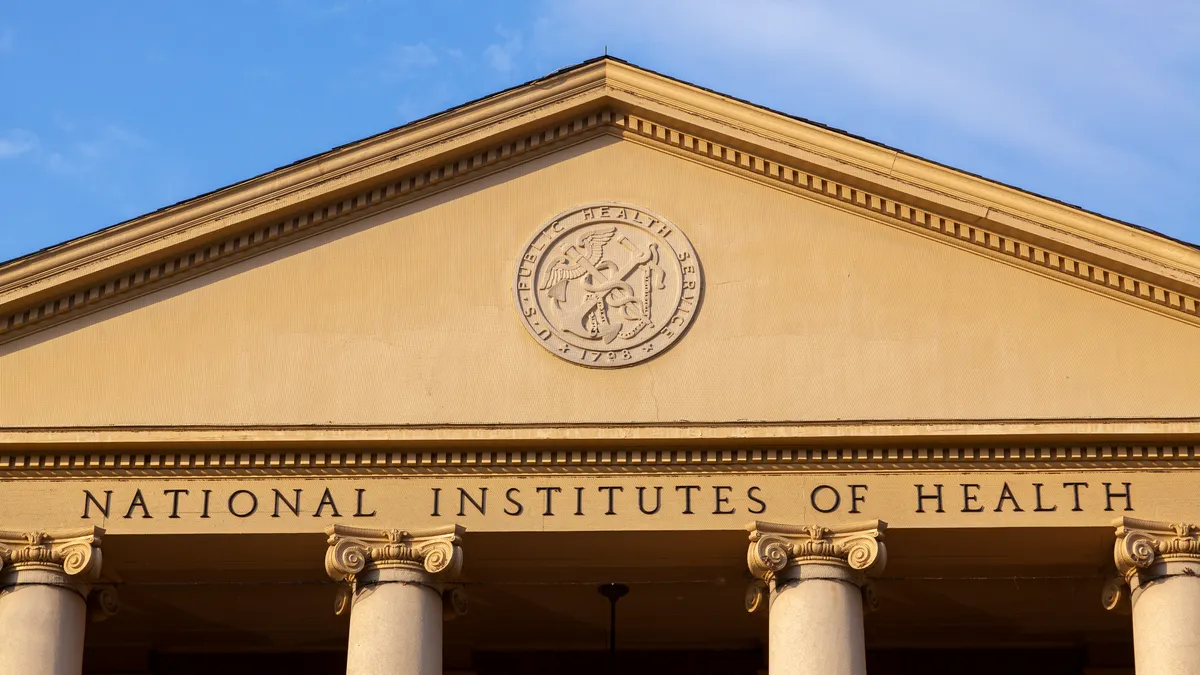Amylyx Pharmaceuticals made waves in 2022 when its ALS drug Relyvrio became the first FDA-approved treatment with evidence suggesting it slowed the progression of the disease.
After adding a Canadian approval, Relyvrio impressed Wall Street during its first year on the market and beat expectations when it raked in $98.2 million in revenue in the second quarter of 2023.
The company’s profile also rose with its connection to 2014’s viral “ice bucket challenge” which funneled $115 million in donations into ALS Association, which then went on to help fund Relyvrio’s development.
Behind the scenes of this success have sat not one, but two CEOs: Josh Cohen and Justin Klee.
Dual leaders of small startups aren’t uncommon (imagine two friends launching a local business, for example), but in the world of larger and more complex companies, not many opt for the co-CEO model.
A Harvard Business Review analysis of the 2,200 companies in the S&P 1200 and Russell 1000 found that fewer than 100 had co-chiefs between 1996 and 2020. Many of the bigger-name examples of companies led by two CEOs have come from tech, such as Netflix and Blackberry.
"The co-CEO model and the model of the organization lends itself well to our industry precisely because it’s so complex and you need so many ranges of expertise."

Justin Klee
Co-CEO, co-founder, Amylyx Pharmaceuticals
Not everyone is sold on this style of leadership. Some point to colossal business failures — including Blackberry — as examples of co-CEO-led calamities, while others believe sharing power and decision-making duties is too complex to be effective.
But a review of 87 public companies with co-CEOs found that almost 60% outperformed on delivering shareholder value. And some who’ve held a co-CEO post argue it can bring a wider range of expertise to the top and more efficiencies by allowing leadership to be in two places at once.
How well does this model work in pharma?
In an interview with Cohen and Klee, who met as students at Brown University, the pair boasted it’s been a winning approach at Amylyx — even when the company struggled in other ways.
In addition to challenges during Relyvrio’s clinical development, European regulators declined to approve the drug last October after questioning survival outcomes and concluding that a “positive balance of benefits and risks” could not be established.
During these bumps in the road, Cohen and Klee said their ability to solve problems together and maintain a steady focus on patients has kept Amylyx grounded.
“It’s been a thrilling 10 years,” Cohen said of the company’s journey from launching in the neurodegenerative space with an experimental drug targeting nerve cell destruction, pivoting from Alzheimer’s disease to ALS, running trials at institutions like Massachusetts General Hospital and finally winning the FDA nod for a disease that typically kills patients within a few years of diagnosis. “But we’re not done until the disease is done.”
Looking ahead, Cohen said Amylyx is not going to “rest on its laurels” and is focused on expanding the reach of Relyvrio while pressing ahead with more trials in ALS and clinical development of the treatment for progressive supranuclear palsy, Wolfram syndrome and Alzheimer’s.
Even as Amylyx straddles both commercialization and R&D efforts, Cohen and Klee said the co-CEO model remains a good fit for the company. Here’s more on why they believe two CEOs can work better than one in pharma.
This interview has been edited for brevity and style.
PHARMAVOICE: What was it like launching Amylyx together?
JUSTIN KLEE: When [Cohen] and I have come across stories of company starts, it’s often written that there was this grand vision and that the founders saw everything clearly and knew where they were going. But in our experience, we had no idea what we were doing. The one thing we had going for us is that we were willing to admit we didn’t know what we were doing. So, we asked for advice and learned what it meant to turn a concept into a drug candidate and then build a company around it. We figured things out as we went.
Did you plan to become co-CEOs? Were you inspired by seeing that model at other companies?
JOSH COHEN: We hadn’t but … it [sort of] quietly happens more than people realize at companies with a single CEO. CEO is a lonely job, so at many companies the CEO picks a buddy like the COO or CFO to have someone they can have candid conversations with. When we’ve talked to other companies [in biotech] we’ve found that dynamic is not uncommon. It’s just more explicit here at Amylyx.
How do you make this model work?
COHEN: It all comes down to communication. At this point we almost always already know what the other person thinks. And the model might not work as well if you are giving two separate messages to the company.
KLEE: From the get-go we also had a shared vision and set of values. That’s so important and we have now codified that.
In terms of decision-making, we try to be simple. We think about what’s best for the people we’re trying to help — people with ALS and their families. We never deviate from that and that’s why we’re so consistent.
How do you divide tasks?
COHEN: We don’t have a strict division of things we do and don’t do. Naturally there are some things we do more of, but it’s not a de facto thing. At the start and end of the day we divide the week or day in terms of where we’re going to go. It’s more of a day-to-day and week-to-week decision.
KLEE: [Cohen] and I think we’re a unit and that hopefully one plus one equals three. That’s how we approach things as opposed to looking at it function by function.
What do you do when you disagree?
KLEE: Probably about 99.9% of the time, [Cohen] and I come to the same conclusion. It’s not uncommon for us to say the same things almost word for word. But in those rare times we come to different conclusions, we step back to discuss and debate. It probably means it’s not a clear-cut decision and maybe one of us is seeing something the other person isn’t. Ultimately, you come to better decisions when you have the chance to debate.
COHEN: That’s when the co-CEO model is the strongest. In moments when despite the data or circumstances we disagree… the right move is to get more data … [because] the data is not leading us to a clear path.
We have not had a situation where we’ve reached an impossible impasse. We share the same mission — and that’s also because of our personalities.
Why do you think the co-CEO model works particularly well in pharma?
KLEE: Drug development is really hard. It takes so many different types of expertise and it’s a long process, so you’re faced with all sorts of challenges. [Cohen] and I [are] of the school of thought that teamwork in the largest sense is more important here than in an industry with faster cycles that is less complex. I don’t mean this in a disparaging way — you can have certain industries where you may build a business model in 12 to 18 months. But that’s not pharma. It took us 10 years to get our first approval and people thought that was fast.
For us, the co-CEO model and the model of the organization lends itself well to our industry precisely because it’s so complex and you need so many ranges of expertise. The more voices you have at the table when you’re making important decisions, the more likely you end up a stronger company.
COHEN: I’d echo that. In pharma, the greatest competitive advantage a company can have is teamwork — not just good tech. It’s about people who work well together and pivot together. [The co-CEO model] suggests teamwork at the top and you want that all the way through the company. When pharma companies are not working it’s often because the emperor has no clothes and people are getting into silos and not bringing up issues, which can happen when you have a complex product with regulatory aspects, clinical, manufacturing etc. Getting that whole orchestra to work well together is hard, but that’s what makes a pharma company work well.
How well does the co-CEO model hold up during a crisis?
KLEE: In one example, I won’t give credit to us but to our team. We were a newly public company and we had vowed to go public with an NDA acceptance letter suggesting we were on a clear path to approval. Then we had an adcomm [that] questioned whether the treatment should go to an approval. We raised capital in our IPO on the premise we were going to commercialize and suddenly this was very uncertain.
[But] we had a wonderful and passionate field team and commercial operations. And fortunately we had a second adcomm … and it was approved.
But during that period of uncertainty, it’s easy for an organization to lose its way. We’re not hitting the milestones. Wall Street’s not happy and stocks are down. [But] we are so proud that our team stayed focused on the mission. We went back to what’s in our control and what’s in our control is to do right by the ALS community. As hard as this is for us, it’s 1,000 times harder for them and their families. Let’s make sure we’re being transparent, focused on their needs, and preparing for launch.
Maybe this worked in part because of the co-CEO model. It goes back to teamwork and hopefully our model showed how we work together from the top.
If you both stepped down from Amylyx, would you recommend the company keeps the co-CEO model?
COHEN: It’s hard to force it and hard to … conduct an executive search for it. It happens more naturally through co-founders. And I think it’s a good model but hard to build later in the company’s lifecycle.
KLEE: [Cohen] and I plan to be here until we’ve cured these diseases. We’d like to do that in a few years, but it’ll probably take more time. So we plan to be here a long time.




















